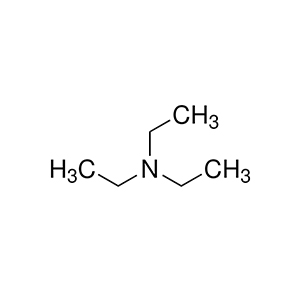Aure Chemical Delivers Excellence in High-Purity Triethylamine (CAS 121-44-8)
Aure Chemical is a leading global supplier of Triethylamine (TEA), also systematically known as N,N-Diethylethanamine. This versatile tertiary amine is a cornerstone chemical, widely recognized for its unique properties as a strong base, an efficient catalyst, and a valuable solvent. Our high-purity Triethylamine is an indispensable component across a vast array of industries, from the synthesis of complex pharmaceuticals and agrochemicals to its critical role in polymer and rubber processing.
Basic Information of Triethylamine
Triethylamine (CAS No. 121-44-8) is meticulously produced and rigorously tested to meet stringent quality standards. We ensure exceptional purity and consistent performance, essential for your most demanding applications:
| CAS No.: | 121-44-8 |
|---|
| EC No.: | 204-469-4 |
|---|
| Linear Formula: | (CH₃CH₂)₃N |
|---|
| Molecular Weight: | 101.19 |
|---|
| Appearance: | Transparent Liquid |
|---|
| Odor: | Strong, fishy, ammoniacal odor. |
|---|
| Melting Point: | −115 °C (lit.) |
|---|
| Boiling point: | 89.5 °C (lit.) |
|---|
| Density: | 0.728 |
|---|
| Solubility: | Slightly soluble in water (exothermic dissolution); miscible with most organic solvents like ethanol, ether, benzene, and chloroform. |
|---|
| Flash point: | 20 °F |
|---|
| Nature: | Highly flammable liquid and vapor, corrosive, alkaline. |
|---|
| RIDADR: | UN 1296 3/PG 2 |
|---|
| Chemical Structure: |  |
|---|
Our commitment to delivering high-purity Triethylamine ensures a reliable and efficient component for your complex manufacturing and synthesis processes.
Primary Applications of Triethylamine (TEA)
Triethylamine's strong basicity and nucleophilicity make it an incredibly versatile chemical with applications spanning numerous industries:
Catalyst in Organic Reactions:
TEA is extensively used as a catalyst and acid scavenger in various organic synthesis reactions, including acylation, alkylation, and condensation reactions. It neutralizes the hydrogen halide by-products, promoting reaction efficiency and yield, particularly in the synthesis of pharmaceuticals and fine chemicals.
Pharmaceutical Synthesis:
It is a crucial reagent and intermediate in the production of numerous active pharmaceutical ingredients (APIs), especially in steps requiring a non-nucleophilic base or a solvent for specific reaction types.
Agrochemical Manufacturing:
TEA is employed in the synthesis of various agrochemicals, including herbicides, fungicides, and insecticides, where its catalytic or acid-scavenging properties are vital for specific reaction pathways.
Polymer & Rubber Industry:
In the polymer industry, TEA acts as a catalyst for polyurethane foam production and as a curing agent for various resins. In rubber processing, it's used as an activator for vulcanization accelerators.
Solvent & Extractant:
Due to its ability to dissolve a wide range of organic compounds, TEA is used as a solvent in certain chemical processes and as an extractant in the purification of various substances.
Neutralizing Agent:
Its strong basicity makes it an effective neutralizing agent for acids in industrial processes and wastewater treatment.
Surfactant Production:
TEA can be used in the synthesis of specific types of surfactants and emulsifiers.
Why Choose Aure Chemical for Your Triethylamine (TEA) Supply?
Aure Chemical is dedicated to providing superior chemical solutions and unparalleled customer support. By partnering with us for your Triethylamine requirements, you benefit from:
Exceptional Purity & Consistency: Our Triethylamine is manufactured to stringent purity specifications, ensuring optimal and predictable performance in your sensitive chemical reactions and formulations.
Reliable Global Supply Chain: We maintain a robust and efficient supply network, guaranteeing timely and secure delivery of this essential chemical to your facilities worldwide, adhering to all safety and regulatory standards for hazardous materials.
Expert Technical Support: Our team of experienced chemists and specialists is readily available to offer comprehensive guidance on product application, safe handling procedures, and optimal storage conditions for Triethylamine.
Commitment to Quality & Safety: We adhere to the highest industry standards for quality management, safety, and environmental responsibility across all our operations, ensuring peace of mind for our clients handling this reactive and flammable material.
Choose Aure Chemical for a trustworthy and dependable supply of high-quality Triethylamine. We are ready to support your most demanding and innovative chemical manufacturing processes.
Related Articles

